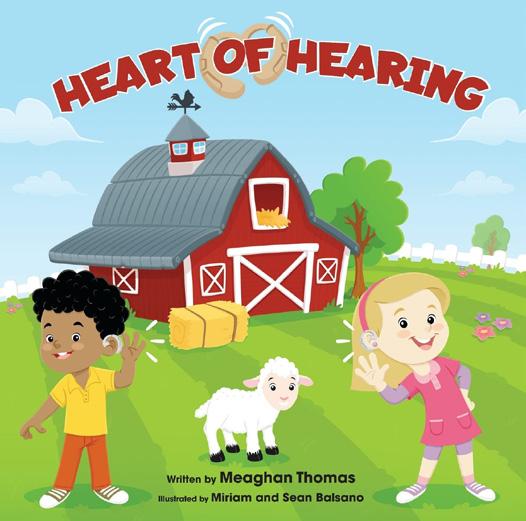
2 minute read
HOW TO PROMOTE INCLUSIVITY FOR DEAF INDIVIDUALS
The World Health Organization says 1.5 billion people across the globe live with some degree of hearing loss. Chronic ear infections and diseases such as measles, mumps, rubella, and meningitis account for more than 30 percent of hearing loss in children, which is a significant problem in less developed nations. Since communication is so vital to the human race and helps people feel more connected, those who are deaf can feel isolated from others because of their hearing issues. Thankfully, there are ways that the public can be more welcoming and accommodating to the deaf community.
Learn about hearing loss
The American Speech-Language-Hearing Association indicates there are three basic forms of hearing loss, which are classified based on which part of the ear is damaged.
• Conductive hearing loss occurs when sound can’t travel through the outer and middle ear. Soft sounds are challenging to hear and louder sounds may be muffled. Medical treatment or surgery often can remedy conductive hearing loss.
• Sensorineural hearing loss is the most common form of hearing loss. It is caused by damage to the inner ear or the nerve pathway to the brain.
• Mixed hearing loss occurs when conductive and sensorineural hearing loss happen concurrently.
Enroll in a sign language class
If you know someone at school, work or in the community who is deaf, you can foster a deeper connection with this person by learning sign language. Americans and English-speaking Canadians use American Sign Language, while French-speaking Canadians utilize Quebec Sign Language (Langue des signes québécoise or LSQ). ASL and LSQ classes are readily available, and a person can learn many words and phrases to make it easier to communicate with someone who is deaf. According to the Centers for Disease Control and Prevention, the average person can make out just 40 percent of conversations by lip-reading, so learning sign language is the best way to foster effective communication.
Caption or bring in interpreters
Employers and educators can take strides to include more captioning or signed interpretations for lessons, meetings and webinars. Text transcripts or slide shows can be sent as a follow-up to oral presentations.
Many companies are unsure of the resources that might be needed by people with hearing disabilities. By expanding hiring diversity and working with deaf people, managers can foster the growth an organization needs to be more inclusive. The website DeafFriendly.com enables people to rate the level of deaf-friendliness of any company. Companies can use that feedback to make positive changes to their organizations.
Being more inclusive of deaf individuals can be a goal during Deaf History Month and throughout the rest of the year.
March Kicks Off National Deaf History Month and Hearing Awareness Week!
In honor of this, families can pick up a copy of Heart of Hearing by Meaghan Thomas. Published in fall 2021, Heart of Hearing is an animated and entertaining story for children to encourage them to wear their aids. It provides and highlights aspects of the world around us that would be missed if they chose not to wear them. Readers can purchase Heart of Hearing from Amazon, Barnes&Noble.com, or directly through JCP. A portion of all proceeds will go directly to the non-profit The Heart of Hearing, Inc., created by the author, Meaghan Thomas.










